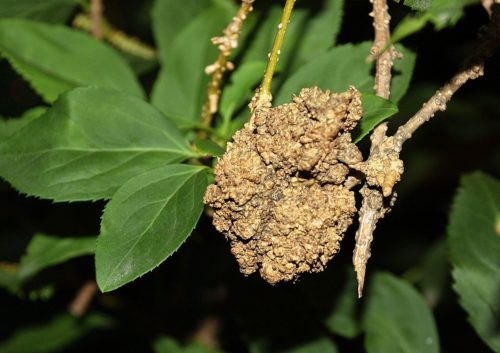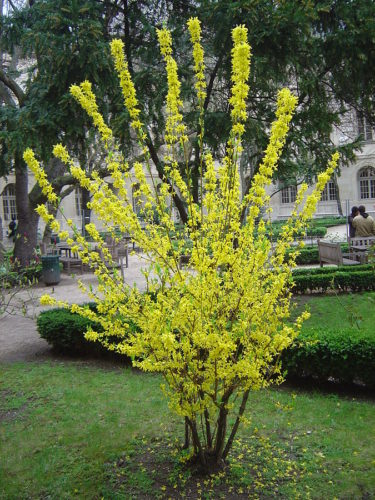Forsythia blooms as early as March with yellow flowers along the bare branches. The shrub can grow over three meter tall and wide.
Also known as:
Crown gall
You are viewing the mobile-adapted version of the page.
The one for tablets, laptop and desktop also provides general information, such as origin, toxicity and cultivation.
Forsythia belongs to the olive family (Oleaceae). Forsythia blooms as early as March with yellow flowers along the bare branches. The shrub can grow to over three meter tall and wide. Forsythia blooms on the biennial wood. It is an easy shrub that likes a spot in the sun and is not picky about soil, as long as it is not too wet or too dry.
Forsythia prunes well, it can also be planted as a hedge. Pruning after flowering promotes the formation of new wood.
Branches with flower buds can be forced to bloom indoors.
Forsythia is easily propagated by layering.
Bugs
Forsythia wilts, leaves turn bronzy and drop off early; branches die. Eventually, the forsythia dies. The root system is too small and partly dead. The roots may show thickening: Northern root-knot nematode (Meloidogyne hapla).
Forsythia lags in growth, has highly branched, bushy roots. Brown spots appear on the roots resulting in affected roots. Water balance is disturbed, wilting follows, shrub yellows and eventually dies: northern root lesion (Pratylenchus penetrans).
Fungi & diseases

Wart-like nodules form on the branches; these can also be found on the roots. The nodules can grow to the size of a ping-pong ball: Crown gall disease (Rhizobium radiobacter).
Leaves wither and branches die unexpectedly. Affected branches show green or brown discoloration. Often only on one side of the bush. Sometimes confused with a very early autumn; but is probably Verticillium wilt (Verticillium spp).
Other
Cats still like to sharpen their nails on the rough bark of Forsythia shrubs. This produces a ragged bark that – if the damage is extensive – can seriously disrupt the shrub’s water balance. To keep cats away, attach mesh around the base of the shrub.

